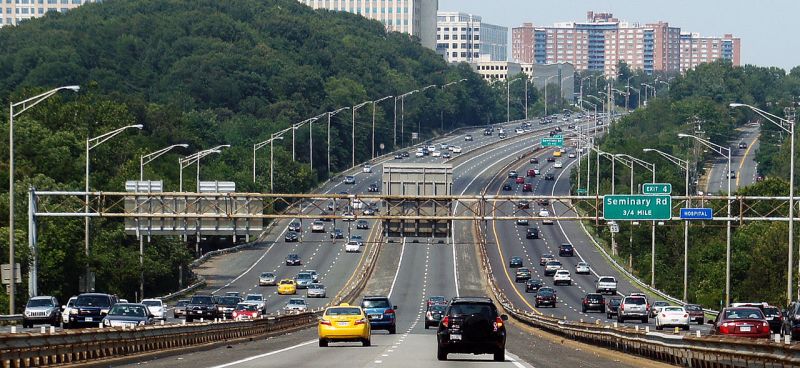Congress needs to value the natural environment, incentivize states to reduce traffic crashes and carbon emissions, and collect accurate data when it allocates nearly $50 billion in highway funding — money that is currently thrown around in ways that make our communities unlivable, a new report says.
Instead of relying on outdated transportation metrics that haven't been changed in more than a decade, lawmakers should not only think about the condition of infrastructure or reducing congestion, but should have a broader view of public safety and sustainability, argues a new report from the D.C.-based Eno Center for Transportation.
"We've written before that maybe we should blow up the highway trust fund and rethink how we fund transportation, but this report was to point out and respond to the growing concern the highway funding is stuck in a rut," Eno Center Vice President Paul Lewis, a co-author of the report, told Streetsblog.
Lewis would like to see the federal government incentivize lowering traffic crashes and reducing carbon emissions by tying increased funding to states that make their roads safer and air cleaner.
"Under the status quo states get same proportion of highway spending no matter what they do," Lewis said. "If states build no roads, have no fatalities, and are doing great on emissions, there’s no reward, and it's the same on the other side."
Some of those goals don't even rely on new infrastructure. States can reduce roadway emissions by reducing speed limits on highways and local streets. Other programs that could help achieve these goals, such as investing in more public transit by adding a bus line, could be included too.
"If it is a true environmental program, all different modes would be eligible and state would choose which mode to invest in to achieve that goal," Lewis said.
There are lots of different ways for states to improve safety, such as investing in cycling and walking infrastructure and reduce speed limits. But states would risk losing federal grants if there's no action taken to reduce fatalities.
"In a lot of our scenarios if a state is not improving on fatalities by capita or by mile they would lose out in substantial amount of funding," Lewis said. "The federal government doesn’t care how state does that other than it becomes a priority for states to make improvements."
This past year, Congress doled out $45.6 billion in highway funding to states by relying on the same metrics it has been using since 2007 — which encourages states to continue building projects that cater to drivers. Unsurprisingly the money often gets distributed based on politics.
States have historically received federal highway grants thanks to a combination of factors and metrics Congress set based on total population, state land area, miles traveled on highways, taxes paid, road needs and funds already deployed on projects. But in the 1980s, as the construction of the country's interstate highway system tapered off, states and congressional delegations focused on increasing their share from the federal spigot regardless of transportation needs.
Now Congress doesn't even bother using information it requires states to collect about highway and bridge performance and typically reauthorizes funding at similar levels to keep state leaders happy.
That's led to more freeway projects, wider lanes on existing highways, and more driving. It's not like the country needs new roadways that encourage drivers to rely on their cars to get around more than they already do. More than three-quarters of commuters in the country drive alone and only five percent of commuters take public transit to get to work. Even in New York, a quarter of all commuters drive by themselves.
But both parties have had little initiative to wean us off our car and truck dependencies by tinkering with federal funding formulas. It just isn't part of the conversation in Washington D.C. these days, especially when the Fixing America’s Surface Transportation Act won't expire until the fall of 2020.





